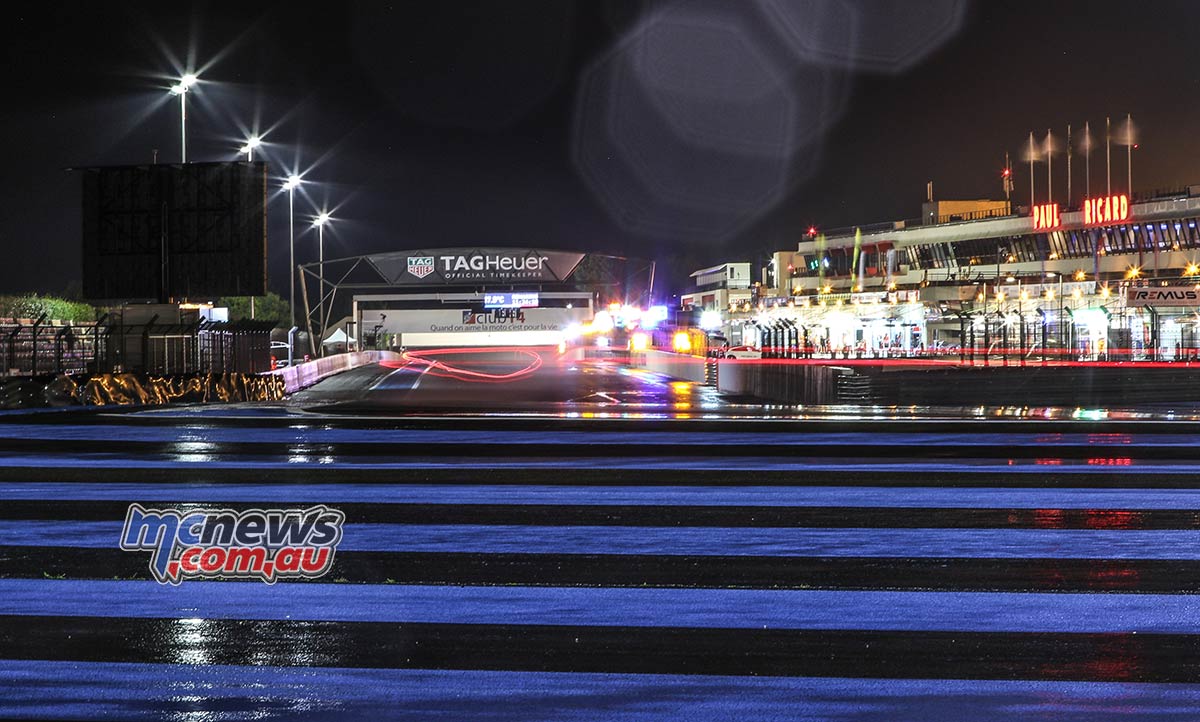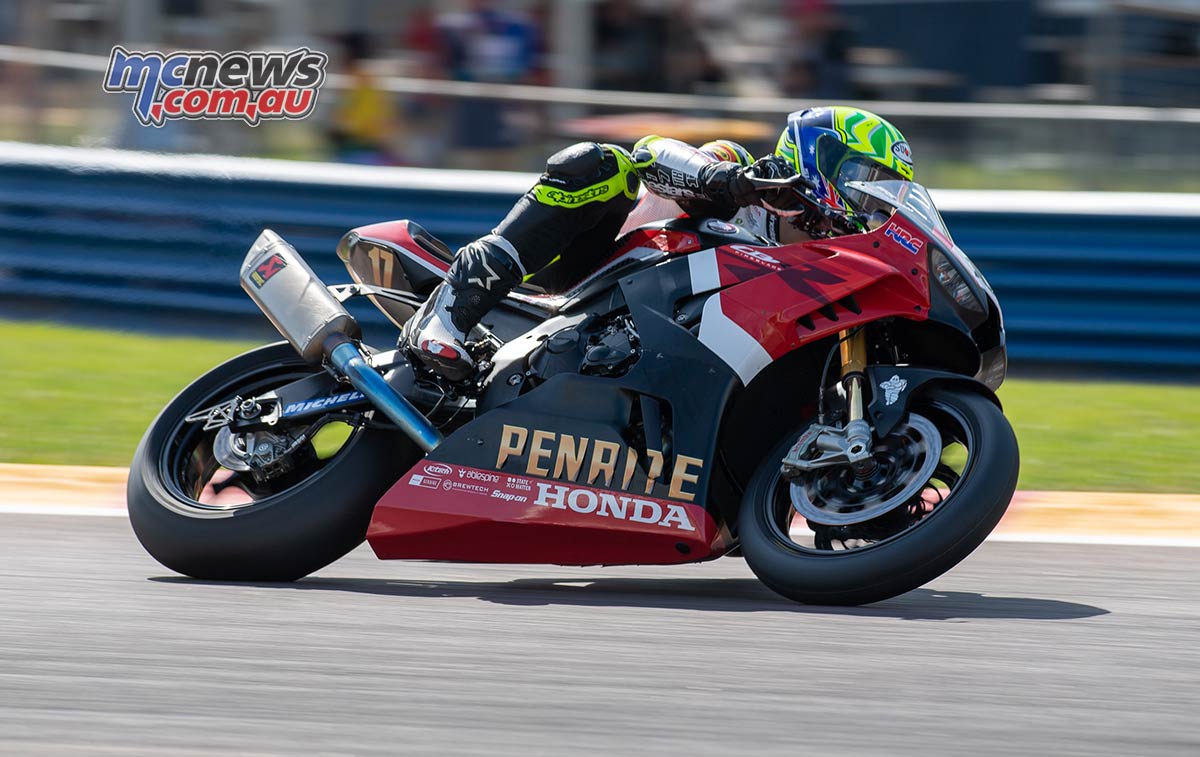2023 AMA Supercross Championship Round 11 – Lumen Field – Seattle, Washington State Results / Report Here Images by Jeff Kardas
The post Huge image drop from Seattle AMA Supercross appeared first on MCNews .
Source: MCNews.com.au
MotoGP Images 2022
Images by 2snap/Vaclav Duska Jr.
2022-MotoGP-Mandalika-Test-Gallery-Yamaha-Quartararo
2022-MotoGP-Mandalika-Test-Gallery-Starts-Yamaha-Aprilia
2022-MotoGP-Mandalika-Test-Gallery-PWR-Radiator-Brakes
2022-MotoGP-Mandalika-Test-Gallery-Nakagami-Backdrop
2022-MotoGP-Mandalika-Test-Gallery-Marc-Marquez-Profile2
2022-MotoGP-Mandalika-Test-Gallery-Jack-Miller-Brakes
2022-MotoGP-Mandalika-Test-Gallery-Espargaro-Aleix
2022-MotoGP-Mandalika-Test-Gallery-Circuit
2022-MotoGP-Mandalika-Test-Gallery-Works
2022-MotoGP-Mandalika-Test-Gallery-Spectator
2022-MotoGP-Mandalika-Test-Gallery-Vinales
2022-MotoGP-Mandalika-Test-Gallery-Sceaper
2022-MotoGP-Mandalika-Test-Gallery-Track
2022-MotoGP-Mandalika-Test-Gallery-Repsol-Honda-SC-Project
2022-MotoGP-Mandalika-Test-Gallery-Swing-arm-Suzuki-GSX-RR
2022-MotoGP-Mandalika-Test-Gallery-Remy-Gardner-Far
2022-MotoGP-Mandalika-Test-Gallery-Pol-Espargaro
2022-MotoGP-Mandalika-Test-Gallery-Morbidelli-Lean
2022-MotoGP-Mandalika-Test-Gallery-Luca-Marini-Brakes
2022-MotoGP-Mandalika-Test-Gallery-Pecco-Bagnaia-Brakes
2022-MotoGP-Mandalika-Test-Gallery-Mir-Brakes
2022-MotoGP-Mandalika-Test-Gallery-KTM-Swingarm
2022-MotoGP-Mandalika-Test-Gallery-Outlook
2022-MotoGP-Mandalika-Test-Gallery-Martin-Jorge
2022-MotoGP-Mandalika-Test-Gallery-KTM-Exhaust1
2022-MotoGP-Mandalika-Test-Gallery-Jorge-Martin-Brakes
2022-MotoGP-Mandalika-Test-Gallery-Marini-Akrapovic
2022-MotoGP-Mandalika-Test-Gallery-Oliveira-Brakes1
2022-MotoGP-Mandalika-Test-Gallery-Fernandez
2022-MotoGP-Mandalika-Test-Gallery-Crash-Bezzecchi-DiGiannantonio
2022-MotoGP-Mandalika-Test-Gallery-Fuel
2022-MotoGP-Mandalika-Test-Gallery-Crowd
2022-MotoGP-Mandalika-Test-Gallery-Gloves-Alpinestars
2022-MotoGP-Mandalika-Test-Gallery-Dovizioso-Brakes
2022-MotoGP-Mandalika-Test-Gallery-Gresini-Muffler
2022-MotoGP-Mandalika-Test-Gallery-Enea-Bastianini
Source: MCNews.com.au
MotoGP Mufflers
Images by 2snap
Amongst the many areas of change seen on the MotoGP prototypes in action at Sepang last week, perhaps the changes most obvious to the naked eye are the exhausts. While a lot of the secret squirrel stuff going on behind the bodywork is easily shielded from the photographers lens, the mufflers are on display… Here is a selection of shots that show some of the different approaches that were being used at the Sepang Test.
2022-MotoGP-SepangTest-2snap-Exhausts-RC16
2022-MotoGP-SepangTest-2snap-Exhausts-RC16
2022-MotoGP-SepangTest-2snap-Exhausts-PolEspargaro
2022-MotoGP-SepangTest-2snap-Exhausts-PolEspargaro
2022-MotoGP-SepangTest-2snap-Exhausts-Nakagami
2022-MotoGP-SepangTest-2snap-Exhausts-Nakagami
2022-MotoGP-SepangTest-2snap-Exhausts-Mir
2022-MotoGP-SepangTest-2snap-Exhausts-Mir
2022-MotoGP-SepangTest-2snap-Exhausts-Marquez’
2022-MotoGP-SepangTest-2snap-Exhausts-Marquez’
2022-MotoGP-SepangTest-2snap-Exhausts-Bezzecchi
2022-MotoGP-SepangTest-2snap-Exhausts-Bezzecchi
2022-MotoGP-SepangTest-2snap-Exhausts-21-DiGiannantonio
2022-MotoGP-SepangTest-2snap-Exhausts-21-DiGiannantonio
2022-MotoGP-SepangTest-2snap-Exhausts-20-Quartararo
2022-MotoGP-SepangTest-2snap-Exhausts-20-Quartararo
2022-MotoGP-SepangTest-2snap-Exhausts-19
2022-MotoGP-SepangTest-2snap-Exhausts-19
2022-MotoGP-SepangTest-2snap-Exhausts-17
2022-MotoGP-SepangTest-2snap-Exhausts-17
2022-MotoGP-SepangTest-2snap-Exhausts-16
2022-MotoGP-SepangTest-2snap-Exhausts-16
2022-MotoGP-SepangTest-2snap-Exhausts-15
2022-MotoGP-SepangTest-2snap-Exhausts-15
2022-MotoGP-SepangTest-2snap-Exhausts-14
2022-MotoGP-SepangTest-2snap-Exhausts-14
2022-MotoGP-SepangTest-2snap-Exhausts-13
2022-MotoGP-SepangTest-2snap-Exhausts-13
2022-MotoGP-SepangTest-2snap-Exhausts-12
2022-MotoGP-SepangTest-2snap-Exhausts-12
2022-MotoGP-SepangTest-2snap-Exhausts-11
2022-MotoGP-SepangTest-2snap-Exhausts-11
2022-MotoGP-SepangTest-2snap-Exhausts-10
2022-MotoGP-SepangTest-2snap-Exhausts-10
2022-MotoGP-SepangTest-2snap-Exhausts-9
2022-MotoGP-SepangTest-2snap-Exhausts-9
2022-MotoGP-SepangTest-2snap-Exhausts-8
2022-MotoGP-SepangTest-2snap-Exhausts-8
2022-MotoGP-SepangTest-2snap-Exhausts-7
2022-MotoGP-SepangTest-2snap-Exhausts-7
2022-MotoGP-SepangTest-2snap-Exhausts-6
2022-MotoGP-SepangTest-2snap-Exhausts-6
2022-MotoGP-SepangTest-2snap-Exhausts-5
2022-MotoGP-SepangTest-2snap-Exhausts-5
2022-MotoGP-SepangTest-2snap-Exhausts-4
2022-MotoGP-SepangTest-2snap-Exhausts-4
2022-MotoGP-SepangTest-2snap-Exhausts-3
2022-MotoGP-SepangTest-2snap-Exhausts-3
2022-MotoGP-SepangTest-2snap-Exhausts-2
2022-MotoGP-SepangTest-2snap-Exhausts-2
2022-MotoGP-SepangTest-DesmoSedici-Exhaust-Marini
2022-MotoGP-SepangTest-DesmoSedici-Exhaust-Marini
2022-MotoGP-SepangTest-Day1-Suzuki-Exhaust-2snap
2022-MotoGP-SepangTest-Day1-Suzuki-Exhaust-2snap
Source: MCNews.com.au
2021/2022 Summer Night Series Images
Images by Half Light Photographic and RbMotoLens
2022-St.GeorgeNightSeries-Rnd3-HalfLight-P600-Agius-Passfield
2022-St.GeorgeNightSeries-Rnd3-HalfLight-P600-Jack-Passfield
2022-St.GeorgeNightSeries-Rnd3-HalfLight-P600-Senna-Agius
2022-St.GeorgeNightSeries-Rnd3-HalfLight-UD1-Cru-Halliday-1
2022-St.GeorgeNightSeries-Rnd3-HalfLight-UD1-Cru-Halliday-4
2022-St.GeorgeNightSeries-Rnd3-HalfLight-UD1-Halliday-Epis
2022-St.GeorgeNightSeries-Rnd3-HalfLight-UD1-Herfoss-Waters
2022-St.GeorgeNightSeries-Rnd3-HalfLight-UD1-Max-Stauffer-1
2022-St.GeorgeNightSeries-Rnd3-HalfLight-UD1-Troy-Herfoss-2
2022-St.GeorgeNightSeries-Rnd3-HalfLight-UD2-Andrew-Black-2
2022-St.GeorgeNightSeries-Rnd3-HalfLight-UD2-Black-Hardwick-Davies
2022-St.GeorgeNightSeries-Rnd3-HalfLight-UD2-Hardwick-Davies
2022-St.GeorgeNightSeries-Rnd3-HalfLight-UD2-Hussein-Ayad-2
2022-St.GeorgeNightSeries-Rnd3-HalfLight-UD2-Rees-Borkowski
2022-St.GeorgeNightSeries-Rnd3-HalfLight-UD2-Sam-Davies-3
2022-St.GeorgeNightSeries-Rnd3-RbMotoLens-DSC_7140-Brodie-Waters-Josh-Waters
2022-St.GeorgeNightSeries-Rnd3-RbMotoLens-DSC_7146-Troy-Herfoss
2022-St.GeorgeNightSeries-Rnd3-RbMotoLens-DSC_7153-Senna-Agius-Stephanie-Redman
2022-St.GeorgeNightSeries-Rnd3-RbMotoLens-DSC_7164-Jamie-Stauffer-Max-Stauffer
2022-St.GeorgeNightSeries-Rnd3-RbMotoLens-DSC_7173-Brodie-Waters-Shane-Kinderis
2022-St.GeorgeNightSeries-Rnd3-RbMotoLens-DSC_7182-Benny-Baker
2022-St.GeorgeNightSeries-Rnd3-RbMotoLens-DSC_7216-Tom-Edwards
2022-St.GeorgeNightSeries-Rnd3-RbMotoLens-DSC_7300-Senna-Agius
2022-St.GeorgeNightSeries-Rnd3-RbMotoLens-DSC_7371-UD1-Troy-Herfoss
2022-St.GeorgeNightSeries-Rnd3-RbMotoLens-DSC_7386-UD1-Troy-Herfoss
2022-St.GeorgeNightSeries-Rnd3-RbMotoLens-DSC_7414-UD1-Nick-Marsh
2022-St.GeorgeNightSeries-Rnd3-RbMotoLens-DSC_7574-P600-Senna-Agius
2022-St.GeorgeNightSeries-Rnd3-RbMotoLens-DSC_7587-P600-Aiden-Hayes
2022-St.GeorgeNightSeries-Rnd3-RbMotoLens-DSC_7668-P600-Aiden-Hayes
2022-St.GeorgeNightSeries-Rnd3-RbMotoLens-DSC_7701-UD1-Cru-Halliday
2022-St.GeorgeNightSeries-Rnd3-RbMotoLens-DSC_7714-UD1-Greg-Nagy
2022-St.GeorgeNightSeries-Rnd3-RbMotoLens-DSC_7742-UD1-Ben-Burke-Troy-Herfoss-Lachlan-Eppis
2022-St.GeorgeNightSeries-Rnd3-RbMotoLens-DSC_7764-UD1-Josh-Waters
2022-St.GeorgeNightSeries-Rnd3-RbMotoLens-DSC_7776-UD1-Max-Stauffer
2022-St.GeorgeNightSeries-Rnd3-RbMotoLens-DSC_7792-UD2-R1-Heading-out-of-pitlane
2022-St.GeorgeNightSeries-Rnd3-RbMotoLens-DSC_7905-P600-Senna-Agius
2022-St.GeorgeNightSeries-Rnd3-RbMotoLens-DSC_7941-P600-Senna-Agius
2022-St.GeorgeNightSeries-Rnd3-RbMotoLens-DSC_8095-UD1-Troy-Herfoss
2022-St.GeorgeNightSeries-Rnd3-RbMotoLens-DSC_8111-UD1-BRENDAN-MCINTYRE
2022-St.GeorgeNightSeries-Rnd3-RbMotoLens-DSC_8137-UD1-R2-Cru-Halliday-Leads-Troy-Herfoss
2022-St.GeorgeNightSeries-Rnd3-RbMotoLens-DSC_8156-UD1-Greg-Nagy
2022-St.GeorgeNightSeries-Rnd3-RbMotoLens-DSC_8179-UD1-Greg-Nagy
2022-St.GeorgeNightSeries-Rnd3-RbMotoLens-DSC_8201-UD1-Max-Stauffer
2022-St.GeorgeNightSeries-Rnd3-RbMotoLens-DSC_8226-UD1-R2-Cru-Halliday-Leads-Troy-Herfoss
2022-St.GeorgeNightSeries-Rnd3-RbMotoLens-DSC_8263-UD2-Jacob-Hatch
2022-St.GeorgeNightSeries-Rnd3-RbMotoLens-DSC_8535-UD1-R2-Cru-Halliday-Leads-Josh-Waters
2022-St.GeorgeNightSeries-Rnd3-RbMotoLens-DSC_8563-UD1-BRENDAN-MCINTYRE
2022-St.GeorgeNightSeries-Rnd3-RbMotoLens-DSC_8593-UD1-Tim-Griffiths
2022-St.GeorgeNightSeries-Rnd3-RbMotoLens-DSC_8658-UD1-Max-Stauffer
2022-St.GeorgeNightSeries-Rnd3-RbMotoLens-DSC_8734-UD2-ANDREW-SMART
Source: MCNews.com.au
2021/2022 Summer Night Series Images
Images by Half Light Photographic and RbMotoLens
2022-St.GeorgeNightSeries-Rnd3-HalfLight-P600-Aidan-Hayes
2022-St.GeorgeNightSeries-Rnd3-HalfLight-P600-Rees-Kitson-1
2022-St.GeorgeNightSeries-Rnd3-HalfLight-UD1-Ben-Burke-1
2022-St.GeorgeNightSeries-Rnd3-HalfLight-UD1-Cru-Halliday-2
2022-St.GeorgeNightSeries-Rnd3-HalfLight-UD1-Epis-Burke-Herfoss
2022-St.GeorgeNightSeries-Rnd3-HalfLight-UD1-Halliday-Epis-Waters
2022-St.GeorgeNightSeries-Rnd3-HalfLight-UD1-Josh-Waters
2022-St.GeorgeNightSeries-Rnd3-HalfLight-UD1-Nick-Marsh
2022-St.GeorgeNightSeries-Rnd3-HalfLight-UD1-Troy-Herfoss-3
2022-St.GeorgeNightSeries-Rnd3-HalfLight-UD2-Andrew-Burley
2022-St.GeorgeNightSeries-Rnd3-HalfLight-UD2-Gareth-Rees
2022-St.GeorgeNightSeries-Rnd3-HalfLight-UD2-Hardwick-ORourke-Black
2022-St.GeorgeNightSeries-Rnd3-HalfLight-UD2-Joshua-ORourke
2022-St.GeorgeNightSeries-Rnd3-HalfLight-UD2-Sam-Davies
2022-St.GeorgeNightSeries-Rnd3-RbMotoLens-DSC_7126-Brooding-Clouds
2022-St.GeorgeNightSeries-Rnd3-RbMotoLens-DSC_7142-Glenn-Allerton
2022-St.GeorgeNightSeries-Rnd3-RbMotoLens-DSC_7150-Josh-Waters
2022-St.GeorgeNightSeries-Rnd3-RbMotoLens-DSC_7156-Troy-Herfoss
2022-St.GeorgeNightSeries-Rnd3-RbMotoLens-DSC_7165-Jack-Passfield
2022-St.GeorgeNightSeries-Rnd3-RbMotoLens-DSC_7176-Lachlan-Epis-Greg-Epis
2022-St.GeorgeNightSeries-Rnd3-RbMotoLens-DSC_7186-Jacob-Hatch
2022-St.GeorgeNightSeries-Rnd3-RbMotoLens-DSC_7266-Senna-Agius
2022-St.GeorgeNightSeries-Rnd3-RbMotoLens-DSC_7336-Senna-Agius
2022-St.GeorgeNightSeries-Rnd3-RbMotoLens-DSC_7374-UD1-Josh-Waters
2022-St.GeorgeNightSeries-Rnd3-RbMotoLens-DSC_7389-UD1-Cru-Halliday
2022-St.GeorgeNightSeries-Rnd3-RbMotoLens-DSC_7418-UD1-Ben-Burke
2022-St.GeorgeNightSeries-Rnd3-RbMotoLens-DSC_7582-P600-Jack-Passfield
2022-St.GeorgeNightSeries-Rnd3-RbMotoLens-DSC_7589-P600-Aiden-Hayes
2022-St.GeorgeNightSeries-Rnd3-RbMotoLens-DSC_7694-UD1-Nick-Marsh
2022-St.GeorgeNightSeries-Rnd3-RbMotoLens-DSC_7704-UD1-Troy-Herfoss
2022-St.GeorgeNightSeries-Rnd3-RbMotoLens-DSC_7716-UD1-R1-Start
2022-St.GeorgeNightSeries-Rnd3-RbMotoLens-DSC_7745-UD1-Nick-Marsh
2022-St.GeorgeNightSeries-Rnd3-RbMotoLens-DSC_7770-UD1-Troy-Herfoss
2022-St.GeorgeNightSeries-Rnd3-RbMotoLens-DSC_7778-UD1-Nick-Mash
2022-St.GeorgeNightSeries-Rnd3-RbMotoLens-DSC_7828-UD2-Huss-Alfonso
2022-St.GeorgeNightSeries-Rnd3-RbMotoLens-DSC_7907-P600-Senna-Agius-Leads
2022-St.GeorgeNightSeries-Rnd3-RbMotoLens-DSC_8091-UD1-R2-Cru-Halliday-Leads-Troy-Herfoss
2022-St.GeorgeNightSeries-Rnd3-RbMotoLens-DSC_8099-UD1-Ben-Bourke
2022-St.GeorgeNightSeries-Rnd3-RbMotoLens-DSC_8132-UD1-Nick-Mash
2022-St.GeorgeNightSeries-Rnd3-RbMotoLens-DSC_8146-UD1-Ben-Bourke
2022-St.GeorgeNightSeries-Rnd3-RbMotoLens-DSC_8162-UD1-
2022-St.GeorgeNightSeries-Rnd3-RbMotoLens-DSC_8191-
2022-St.GeorgeNightSeries-Rnd3-RbMotoLens-DSC_8216-UD1-Greg-Nagy
2022-St.GeorgeNightSeries-Rnd3-RbMotoLens-DSC_8231-UD1-Max-Stauffer
2022-St.GeorgeNightSeries-Rnd3-RbMotoLens-DSC_8408-P600-Carl-Kitson
2022-St.GeorgeNightSeries-Rnd3-RbMotoLens-DSC_8547-UD1-Max-Stauffer
2022-St.GeorgeNightSeries-Rnd3-RbMotoLens-DSC_8569-UD1-R2-Cru-Halliday
2022-St.GeorgeNightSeries-Rnd3-RbMotoLens-DSC_8615-UD1-Nick-Mash
2022-St.GeorgeNightSeries-Rnd3-RbMotoLens-DSC_8673-UD2-SAM-DAVIES
2022-St.GeorgeNightSeries-Rnd3-RbMotoLens-DSC_8764-UD2-Huss-Alfonso
Source: MCNews.com.au
2021/2022 Summer Night Series Round 3
Images by Half Light Photographic and RbMotoLens
2022-St.GeorgeNightSeries-Rnd3-HalfLight-P600-Murphy-Hayes-Rees
2022-St.GeorgeNightSeries-Rnd3-HalfLight-P600-Rees-Kitson-2
2022-St.GeorgeNightSeries-Rnd3-HalfLight-UD1-Ben-Burke-2
2022-St.GeorgeNightSeries-Rnd3-HalfLight-UD1-Cru-Halliday-3
2022-St.GeorgeNightSeries-Rnd3-HalfLight-UD1-Epis-Herfoss
2022-St.GeorgeNightSeries-Rnd3-HalfLight-UD1-Herfoss-Epis
2022-St.GeorgeNightSeries-Rnd3-HalfLight-UD1-Lachlan-Epis
2022-St.GeorgeNightSeries-Rnd3-HalfLight-UD1-Troy-Herfoss-1
2022-St.GeorgeNightSeries-Rnd3-HalfLight-UD2-Andrew-Black
2022-St.GeorgeNightSeries-Rnd3-HalfLight-UD2-Avery-Davies-Black
2022-St.GeorgeNightSeries-Rnd3-HalfLight-UD2-Greg-Avery
2022-St.GeorgeNightSeries-Rnd3-HalfLight-UD2-Hussein-Ayad
2022-St.GeorgeNightSeries-Rnd3-HalfLight-UD2-Paris-Hardwick
2022-St.GeorgeNightSeries-Rnd3-HalfLight-UD2-Sam-Davies-2
2022-St.GeorgeNightSeries-Rnd3-RbMotoLens-DSC_7139-UD1-Tim-Griffiths
2022-St.GeorgeNightSeries-Rnd3-RbMotoLens-DSC_7145-Troy-Herfoss
2022-St.GeorgeNightSeries-Rnd3-RbMotoLens-DSC_7152-Jack-Passfield
2022-St.GeorgeNightSeries-Rnd3-RbMotoLens-DSC_7161-Troy-Herfoss-Cru-Halliday
2022-St.GeorgeNightSeries-Rnd3-RbMotoLens-DSC_7171-Jacob-Hatch
2022-St.GeorgeNightSeries-Rnd3-RbMotoLens-DSC_7179-Tom-Edwards
2022-St.GeorgeNightSeries-Rnd3-RbMotoLens-DSC_7188-Shane-Kinderis
2022-St.GeorgeNightSeries-Rnd3-RbMotoLens-DSC_7284-Tom-Edwards
2022-St.GeorgeNightSeries-Rnd3-RbMotoLens-DSC_7367-UD1-Lachlan-Epis
2022-St.GeorgeNightSeries-Rnd3-RbMotoLens-DSC_7376-Troy-Herfoss
2022-St.GeorgeNightSeries-Rnd3-RbMotoLens-DSC_7398-Max-Stauffer
2022-St.GeorgeNightSeries-Rnd3-RbMotoLens-DSC_7573-P600-Senna-Agius
2022-St.GeorgeNightSeries-Rnd3-RbMotoLens-DSC_7584-P600-Jack-Passfield
2022-St.GeorgeNightSeries-Rnd3-RbMotoLens-DSC_7665-P600-Jack-Passfield
2022-St.GeorgeNightSeries-Rnd3-RbMotoLens-DSC_7697-UD1-Troy-Herfoss
2022-St.GeorgeNightSeries-Rnd3-RbMotoLens-DSC_7708-UD1-Josh-Waters
2022-St.GeorgeNightSeries-Rnd3-RbMotoLens-DSC_7732-UD1-Cru-Halliday-Leads-Josh-Waters
2022-St.GeorgeNightSeries-Rnd3-RbMotoLens-DSC_7751-UD1-Tim-Griffiths
2022-St.GeorgeNightSeries-Rnd3-RbMotoLens-DSC_7773-UD1-Ben-Bourke
2022-St.GeorgeNightSeries-Rnd3-RbMotoLens-DSC_7788-UD1-Greg-Nagy
2022-St.GeorgeNightSeries-Rnd3-RbMotoLens-DSC_7878-UD2-
2022-St.GeorgeNightSeries-Rnd3-RbMotoLens-DSC_7910-P600-Jack-Passfield
2022-St.GeorgeNightSeries-Rnd3-RbMotoLens-DSC_8093-UD1-Troy-Herfoss
2022-St.GeorgeNightSeries-Rnd3-RbMotoLens-DSC_8103-UD1-Josh-Waters-Leads
2022-St.GeorgeNightSeries-Rnd3-RbMotoLens-DSC_8135-UD1-Nick-Mash
2022-St.GeorgeNightSeries-Rnd3-RbMotoLens-DSC_8152-UD1-Nick-Mash
2022-St.GeorgeNightSeries-Rnd3-RbMotoLens-DSC_8173-UD1-Greg-Nagy
2022-St.GeorgeNightSeries-Rnd3-RbMotoLens-DSC_8195-UD1-Ben-Bourke
2022-St.GeorgeNightSeries-Rnd3-RbMotoLens-DSC_8223-UD1-R2-Cru-Halliday-Leads-Troy-Herfoss
2022-St.GeorgeNightSeries-Rnd3-RbMotoLens-DSC_8232-UD1-Nick-Mash
2022-St.GeorgeNightSeries-Rnd3-RbMotoLens-DSC_8511-P600-Carl-Kitson
2022-St.GeorgeNightSeries-Rnd3-RbMotoLens-DSC_8555-UD1-Josh-Waters
2022-St.GeorgeNightSeries-Rnd3-RbMotoLens-DSC_8574-UD1-Lachlan-Epis
2022-St.GeorgeNightSeries-Rnd3-RbMotoLens-DSC_8640-UD1-Ben-Bourke
2022-St.GeorgeNightSeries-Rnd3-RbMotoLens-DSC_8726-UD2-MATTHEW-EDWARDS
Source: MCNews.com.au
2021 FIM Endurance World Championship
Bol d’Or 24 Hour Images
Full Race Report and Results Here
Source: MCNews.com.au
2021 AMA ProMX Images Round 4 RedBud National Gallery B | MCNews
2021 Pro Motocross Championship
Images by Jeff Kardas
No Result
MCNews.com.au
2021 AMA ProMX Images Round 4 RedBud National Gallery A | MCNews
2021 Pro Motocross Championship
Images by Jeff Kardas
No Result
MCNews.com.au
2021 ASBK Hidden Valley
Image Gallery D by RbMotoLens and Half Light
Great selection of images captured over the racing weekend from the recent ASBK round at Hidden Valley Raceway.
Source: MCNews.com.au
Posts navigation
Bringing you the Best Motorcycle News from Around the Web!



